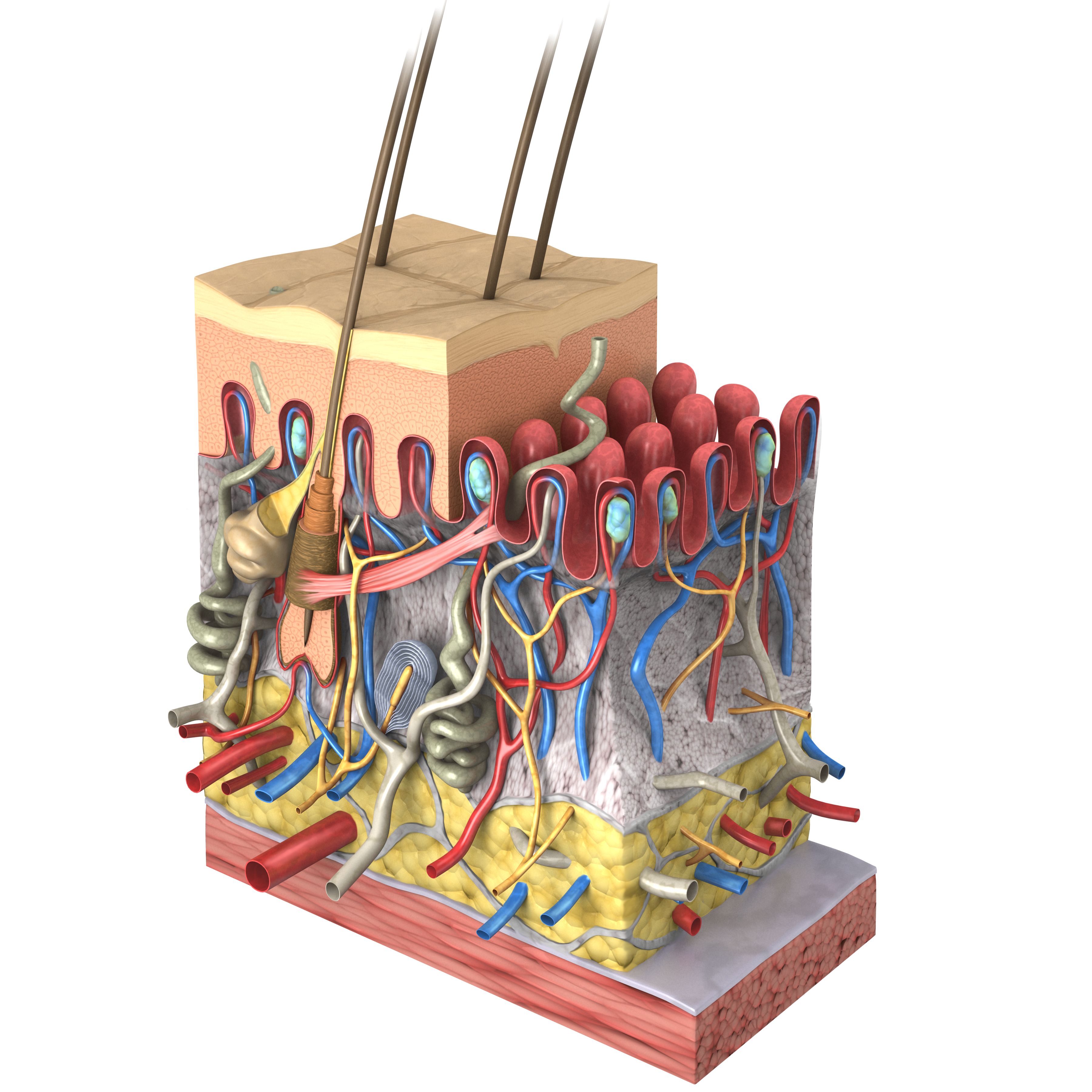Cross section of the skin
The mechano- and sensory receptors of the skin make it a gateway through which sensations such as temperature, pressure and pain are transmitted to the nervous system. The skin also plays a prominent role in communication and appearance.
The skin (cutis) is composed of two main layers: 1) the outermost layer – the epidermis, and 2) the dermis. Strictly speaking, the third layer – the hypodermis (subcutis) – is not part of the skin but it anchors the skin to the structures below it and shares some of the skin’s protective functions.
The epidermis is an avascular stratified squamous epithelium which consists of keratinocytes. The outermost layer – the stratum corneum – consists of dead cells that contain a high content of intracellular keratin and extracellular lipids consituting both the “waterproofing” and the primary physical barrier against the environment. The upper cells of the stratum corneum are constantly sloughed off in a process called desquamation.
The dermis is composed of connective tissue containing collagen and elastic fibers and consists primarily of fibroblasts. It contains an extensive network of blood vessels which provides nourishment to the cells of the epidermis and dermis. The dermis also contains many sweat and sebaceous glands, as well as nerve endings and hair follicles.
The dermis is structured in two layers, 1) the papillary layer, which contains a relatively loose network of interlacing collagen and elastic fibers and small blood vessels, and 2) the reticular layer, which contains a more densely arranged, tough and flexible meshwork of fibers. The dermal epidermal junction is characterized by protuberances which form the dermal papillae and which provides mechanical support for the epidermis.

